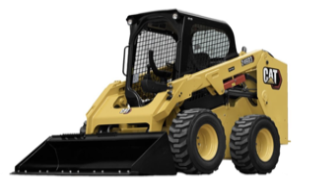
Information On Skid Steer Loader
A small, rigid-frame, engine-powered machine with lift arms that may attach to various buckets and other labor-saving tools or accessories is known as a skid loader, skid-steer loader, SSL, or skidsteer.
In skid-steer loaders, the left-side drive wheels have independent control over the right-side drive wheels, and the front and rear wheels on each side are mechanically connected to turn at the same pace. These automobiles frequently have four wheels or tracks. Two distinct and separate transmissions—one for the left-side wheels and one for the right-side wheels—are used to achieve this. Skid steer loaders' original models included both forward and backward clutch drives. Beginning in the middle of the 1970s, nearly all modern skid steers were built with two separate hydrostatic transmissions (one for the left side and one for the right side).
The wheels are frequently fastened in a straight alignment to the machine's body without the use of a separate steering system. The machine turns by sliding or dragging its fixed-orientation wheels across the ground thanks to differential steering, in which the left and right wheel pairs are propelled at separate speeds. By rotating one set of wheels ahead while moving the other set of wheels backward, skid-steer loaders can make zero-radius turns. These machines are exceptionally manoeuvrable and helpful for applications that call for a small, sturdy, and agile loader or tool carrier in limited spaces because of its "zero-turn" function (the machine can turn around within its own length).
The machine cannot be damaged by the torsional stresses produced by this dragging motion because of its extremely stiff construction and sturdy wheel bearings. Skid steers can harm supple or delicate road surfaces similarly to tracked vehicles because of their high ground friction. By using wheels that are properly constructed, like the Mecanum wheel, they can be changed to have reduced ground friction.
Those skid-steer loaders that use tracks rather than wheels are referred to as "compact track loaders."
Both wheel and track variants of skid steer loaders work best when they are unbalanced and have either the front or the back wheels substantially loaded. Skid steer loaders are all heavier at the back when the bucket is empty, which causes the back wheels to pivot as the front wheels move. When a bucket is fully loaded, the weight distribution changes, and the front wheels start to weigh much more than the back wheels. The front wheels rotate and the back wheels slide when the vehicle is loaded and doing a zero-turn.
A machine that is unbalanced turns more slowly and uses its tyres more gradually. A more completely laden machine is constantly kept at the front or back by skilled operators. When the weight is evenly distributed between the front and rear axles and is at (or nearly at) 50/50, both sets of wheels resist pivoting or sliding, and the machine begins to "buck" as a result of the high friction. Tyre wear dramatically rises in this scenario.
These machines have raise arms alongside the driver with pivot points behind the driver's shoulders, unlike a typical front loader. Early skid loaders were less safe than traditional front loaders since the operator was so close to moving booms, especially because there was no rollover protection structure. Modern skid loaders have fully enclosed or open cabs, as well as other safety features. They may move materials from one place to another, transport items in the bucket, load materials into trucks or trailers, and carry out a range of digging and grading tasks, just like other front loaders.
Skid Steer Loader History
Cyril and Louis Keller, two brothers from Rothsay, Minnesota, created the first front-end loader with three wheels in 1957. The Keller family constructed the loader to aid farmer Eddie Velo in automating the collection of poultry waste from his barn. Its name alludes to the equipment's ability to rotate around within its own length while carrying out activities that a standard front-end loader would carry out.
In 1958, after acquiring the Keller loader's patent rights, the Melroe brothers of Gwinner, North Dakota's Melroe Manufacturing Company engaged the Keller family to continue perfecting their innovation. The M-200 Melroe self-propelled loader was the result of this collaboration by the end of 1958. It possessed a 12.9 horsepower (9.6 kW) engine, two independent front-drive wheels, a rear caster wheel, and a lifting capacity of 750 pounds (340 kg). The first four-wheel, true skid-steer loader, the M-400, was released two years after the caster wheel was replaced with a rear axle. The M-440's 15.5 horsepower (11.6 kW) engine pushes its 1,100 pound rated working weight (500 kg). With the M600 loader, skid-steer development lasted through the middle of the 1960s. The recognisable Bobcat brand was trademarked by Melroe in 1962.
The first front-end loader with three wheels was developed in 1957 by two brothers from Rothsay, Minnesota, named Cyril and Louis Keller. The loader was built by the Keller family to help farmer Eddie Velo automate the removal of poultry excrement from his barn. Its name references to the machine's capacity to turn around within itself while doing tasks that a typical front-end loader would perform.
The Melroe brothers of Gwinner, North Dakota's Melroe Manufacturing Company hired the Keller family to continue perfecting their invention in 1958 after purchasing the patent rights to the Keller loader. By the end of 1958, the product of their collaboration was the M-200 Melroe self-propelled loader. It had two independent front-drive wheels, a rear caster wheel, a 12.9 horsepower (9.6 kW) engine, and a 750-pound lifting capability (340 kg). Two years after the caster wheel was switched out for a rear axle, the first real four-wheel skid-steer loader, the M-400, was made available. The 1,100 pound rated operating weight of the M-440 is propelled by its 15.5 horsepower (11.6 kW) engine (500 kg). Skid-steer development continued with the M600 loader into the middle of the 1960s. Melroe registered the trademark for the recognisable Bobcat brand in 1962.
Applications For A Skid Steer Loader
A skid-steer loader can occasionally take the place of a huge excavator by digging a hole from the inside. This is especially true when installing swimming pools in backyards that are too small for a big digger. The skid loader first drives to the edge of the target excavation and constructs a ramp there. It then transports material out of the hole via the ramp. The skid loader lengthens and steepens the ramp as the depth of the excavation rises. If you want to build a basement beneath an existing house but there isn't enough above clearance for a big excavator boom, you can also utilise this technique. Backhoe attachments for skid-steers are manufactured by several businesses. These can be used in the same situations and are more efficient than the method previously indicated for excavating in a small area.
Other uses include moving raw materials around a construction site with pallet forks or buckets. Rough terrain forklifts are smaller and have tremendous movement but poor traction, whereas tough terrain forklifts have very poor manoeuvrability. Although skid steer loaders normally have a smaller lift capacity than forklifts, they are very manoeuvrable and have good traction.
When larger snow ploughs find it difficult to manoeuvre around existing cars, lamp poles, and curbs in constrained parking spots, skid steer loaders are a great alternative. Instead of only ploughing and pushing snow onto a mound, skid steers can also remove it.
Applications For A Small Frame Loader
You should research compact skid steers if you work in the trenching, levelling, post hole digging, small demolition, material transfer, building, and site development industries. They are perfect for any occupation where space can be at a premium due to their compact size and great regard for mobility. By using their light weight, landscapers can avoid the most delicate terrain and cause the least harm to an established grass.
Application For A Medium Frame Loaders
The greatest skid steers have a medium frame because they are suitable for projects that require precise movement. They are skilled at clearing debris, moving big objects, light grading and levelling, and site preparation at any construction or material management site. Although they require a little more space to operate than smaller ones, they are strong enough to finish all but the most difficult tasks at these construction sites.
Application For A Large Frame Loaders
Large frame skid steers offer rapid movement and a low profile despite being more powerful and capable of using the full range of attachments than their smaller counterparts, allowing them to manoeuvre around building sites without heavier equipment interfering in their way. Large-scale excavation projects, drilling operations, significant demolition projects, and grading operations all benefit from the performance of these models. Vast frame skid steers can move and dump large volumes of material, as well as perform nearly any other activity you would face on a construction or demolition site, with the help of attachments.
Clearing Snow
Snow can be quickly removed from a construction site or road by a skid steer's bucket, but in colder locations, operators may opt to utilise a snow blade or snow blower attachment.
Excavation
A skid steer may carry out excavation tasks due to the addition of accessories like a ripper, trencher, tiller, or wheel saw.
Construction
To expedite work on construction and building projects, a skid steer can be equipped with a pavement miller or a cement mixer.
Landscaping Works
A skid steer is a great tool for landscape work because to its stump grinder, wood chipper, tree spade, and trench-digging attachments, but pallet forks and bale spears are more suited for agricultural and warehouse operations.
Trenching and Digging
Trench diggers, backhoes, and augers are a few of the standard digging tools that skid steers provide (which operates like a corkscrew to dig a precise hole).
Your skid steer is the greatest option for any task on practically any construction site with the appropriate attachment. Teams must therefore inform skid steer operators on the safety and maintenance requirements for the skid steer and the accessories that are utilised on each project.
Different Skid Steer Loaders
The two main types of skid steer loaders are wheeled and tracked. In the articles listed below, you can read more about these various loader types, their sizes, and their capacities.
Wheeled Skid Steer Loaders

Before track steers were developed to address some of their drawbacks, skid steers were only offered as wheeled models. Each of them has benefits and drawbacks.
Benefits
On flat surfaces like concrete, asphalt, or compacted soil, wheeled skid steers perform well. They can cover more ground more quickly since they can move across these surfaces much more fast than tracked skid steers can.
On landscaped grounds where tracked skid steers might rip up surfaces, wheeled skid steers are typically preferred.
Compared to track steers, they are less expensive to buy and keep.
Disadvantages
Since it only has four points of contact (its tyres) to sustain its weight, a wheeled skid steer can become stuck in mud. A tyre could blow out over a rough surface.
Tracks have a longer lifespan than tyres do.
Tracked Skid Steer Loaders
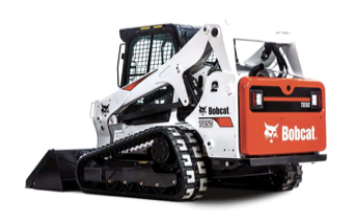
The two wide tracks on tracked skid steers enable them to support more weight. The following are benefits and drawbacks of skid steer tracks versus tyres:
Advantages
They function best on wet, muddy, snowy, and loose sand and gravel terrain because of their wider weight distribution and lesser weight transfer to the ground. Tracked skid steers glide over soft ground rather than sinking into it.
They are more stable on slopes due to their greater ground contact and lower centre of gravity.
Skid steers with tracks provide a more comfortable ride than those with wheels. In addition to not compacting the earth, they also have a greater lifting force and can break through soft ground.
Disadvantages
Stopping is necessary before utilising a track steer on concrete or asphalt. The aggressiveness of the track, according to Hill, "may rip up that type of surface."
When deciding whether to purchase a skid steer rather than rent one, keep in mind that tracked skid steers require more upkeep and cleaning than wheeled skid steers. They cost more money as well.
Replacement of the track requires more labour than replacement of the tyres.
Skid Steer Loader Sizes
Classification
Based on how efficiently they function, skid steer loaders can be divided into three classes:
50 horsepower and less than 1,750 pounds in a small frame
Medium-sized frame, weighing in at 1,750 to 2,200 pounds, and producing 50 to 70 horsepower.
2,200 pounds, over 70 horsepower, and a strong frame
You must be aware of the capacity requirements for both your workload and your workspace in order to choose the model that is best for you. Smaller machines are easier to manoeuvre in confined spaces, even when larger, more powerful equipment may be needed in incomplete or uneven work areas.
You will require a good skid steer with loads of power if your job is big. Faster equipment could be more practical for a lengthy material discharge path. In order to avoid overtaxing your loader, you'll clearly want to make sure it can handle the size of attachments you want.
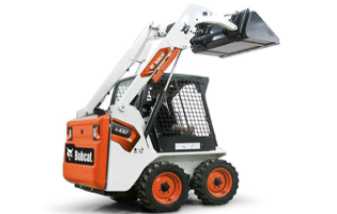
Guide To Skid Steer Loader Attachments
You may be aware that a skid steer, also known as a skid steer loader, is a tool with essentially endless applications. Because of its steering system, the little, rigid-framed, engine-powered workhorse has a suitable name. Instead of changing direction to steer, the wheels simply slow down on either side to produce a "slide," which is more like the machine dragging its feet to aid spin. You may have heard these referred to as Bobcats since Bobcat is the most well-known maker.
You may use the same equipment to perform a variety of tasks by browsing through the different skid steer accessories available for a skid steer loader on our skid steer attachments page. This adds to their great worth. But much more has to be discovered about these attachments.
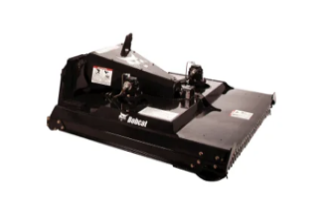
What Is A Skid Steer Loader Attachment?
A bucket is the most widely used excavator attachment. Because of its steel composition and teeth-like edges, they are ideal for scooping and excavating. The most common buckets are those for grading and ditching stones (also known as "ditching buckets") (the trenching bucket). When selecting the type of bucket to buy or rent, it's important to take the quality of the soil and any potential attachments, like couplers, into account.
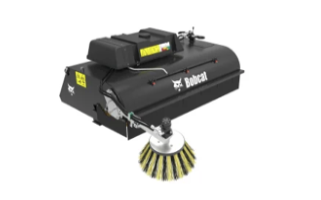
Can A Skid Steer Loader Be Attached To Any Skid Steer Loader?
Even while not all skid steer attachments are compatible, the majority of the accessories you need can be put on your skid steer. This is due to the fact that skid steers come in a variety of varieties, each with a unique capability and set of characteristics. Some attachments may therefore be too much for your particular skid steer to manage. To learn if your skid steer and its attachments will function jointly, you should get in touch with the manufacturers of each part.
The majority of skid steers can mount the majority of attachments because the attachment platform was intended to be "universal," and there are adaptors to emphasise this, but this does not guarantee that they will function together. Incompatibility between an attachment and a skid steer can reduce productivity or create a risky working environment. You should also take into account if your attachments require low flow or high flow capacity, as we go over in more depth below.
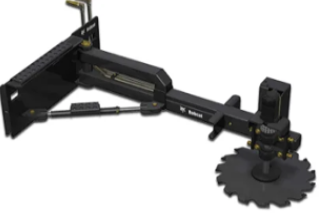
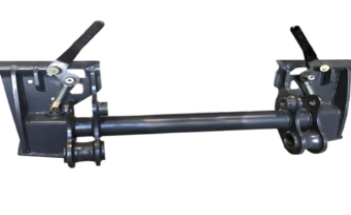
Coupling Attachments To Skid Steer Loaders
The procedure of coupling a skid steer attachment is obviously important, but because of the "universal" platform that skid steers use, coupling is typically simple and uniform for the majority of attachments. For quick skid steer attachment coupling, see the following:
Removing existing attachment
For Hydro-mechanical
For machines with "connect under pressure" coupling, release any system pressure that has built up in the auxiliary lines. Finally, move the coupler toward the machine and hold it in place for five seconds. If this is needed, check the owner's manual for your attachment.
After removing the lines from the hose guide, couple them. Simply put, this lessens the chance of contamination and lowers the amount of pressure that builds up before the next usage. To detach the attachment itself, follow the steps outlined below.
Uncoupling Attachment
The connecting pins can be withdrawn automatically with motorised coupling devices by pressing a button in the cab or manually by releasing a lever behind the attachment.
The connection assembly should be gradually backed back until its top is free of the angled work plate.
By following the steps below, you can now securely and accurately disconnect the attachment you don't require before coupling the attachment you do need:
Coupling Attachment
To align the work plate with the coupling assembly's angle, gently move in the direction of the attachment and nudge it a little forward.
In order to point the coupler toward the skid steer, it should be lifted.
By fully lowering the attachment and dragging it along the ground backward, you can make sure the coupling assembly is secure.
Check the tool carefully for any movement and make sure the pins are still engaged before raising it once more. If there are any specific directions for attaching, check the owner's handbook for your attachment.
After finishing the earlier steps, if your attachment is hydro-mechanical, you must connect the hydraulic power. As seen above, the hydraulic lines from the attachments are attached to the machine's auxiliary connectors.
Start by safely exiting the equipment with three points of contact in place.
The next step is to clean the connector and then feed the regular flow lines through the hose guide on the left lift arm. Always check your owner's manual to find out how to route your attachment properly.
You can finally connect the hydraulic lines to your machine if it has "connect under pressure" connections by releasing the pressure first. To do this, push the connection on the work tool and the coupler on the machine together and hold for five seconds.
What Skid Steer Attachments Are There
There are probably many skid steer loaders already equipped with this practical, multifunctional device. The nicest thing about them is that some of them will feature a unique "four-in-one" design with an opening bucket that can be used for digging, pushing loose debris, and transferring goods that have been dragged back (with the bucket open).
Skid Steer Loader Breaker
The breaker attachment, which functions similarly to a jackhammer but is a more specialised tool, is frequently used to tear materials apart. This hydraulic "hammer" is used for building, tearing down, and maintaining roads.
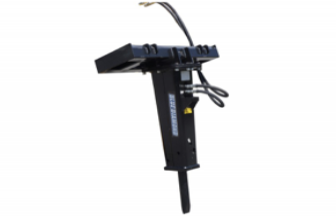
Skid Steer Loader Fork
With the aid of the fork attachment, your skid steer can be utilised successfully as a temporary forklift to transport large amounts of material on pallets (most commonly).

Skid Steer Loader Grapple Bucket
This attachment, which is used in various industries, has tines that make it easier to handle larger and trickier items like logs. This attachment's bucket is used for scooping and storing stuff (like a freestanding bucket).

Skid Steer Loader Planer
The planer frequently chips away at the material underneath concrete when cutting and milling it, and it can even recycle the material right away.

Skid Steer Loader Spreader
As its name implies, a spreader is an attachment that disperses granular substances like salt, sand, fertiliser, and seed. These are mainly used to spray salt to aid in the removal of snow during the winter.
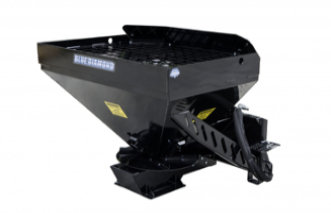
Skid Steer Loader Auger
If a skid steer is needed to bore large holes in the ground, such as those needed for installing poles or trees, an auger is a useful attachment. They are hydraulic and available in various widths to meet your needs.
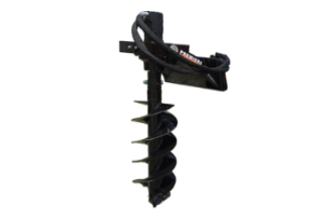
Skid Steer Loader Steel Tracks
Steel tracks are excellent for enhancing your skid steer's handling and traction over uneven terrain like sand, stones, and mud. Please be aware that these only function with particular types of tyres, including the ones that were initially mounted on your skid steer.
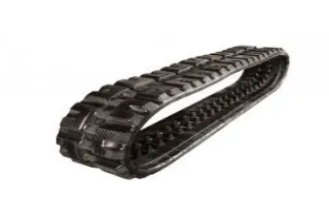
Log Grinder
To remove tree stumps and logs for resizing, a skid steer operator will frequently use a log grinder at a 90-degree angle.

Sweeper
Unquestionably, the attachment that is best for cleaning, sweeping, and gathering garbage both forward and backward is a sweeper. For greater adaptability and effectiveness, a gutter brush is frequently available as an option.
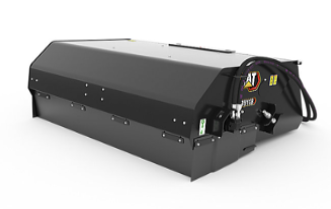
Flail cutter
A flail cutter is the best attachment for trimming light undergrowth and small trees. They are excellent for effectively eliminating undesired plants, especially in limited spaces, because of their floating linkage, which makes it simple for them to follow the ground.
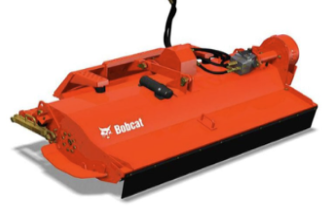
Bobcat Skid Steer Loader Range
Macs Digger Hire Hampshire Copyright© 2022 All Rights Reserved